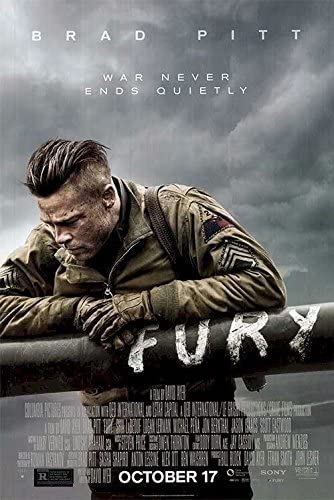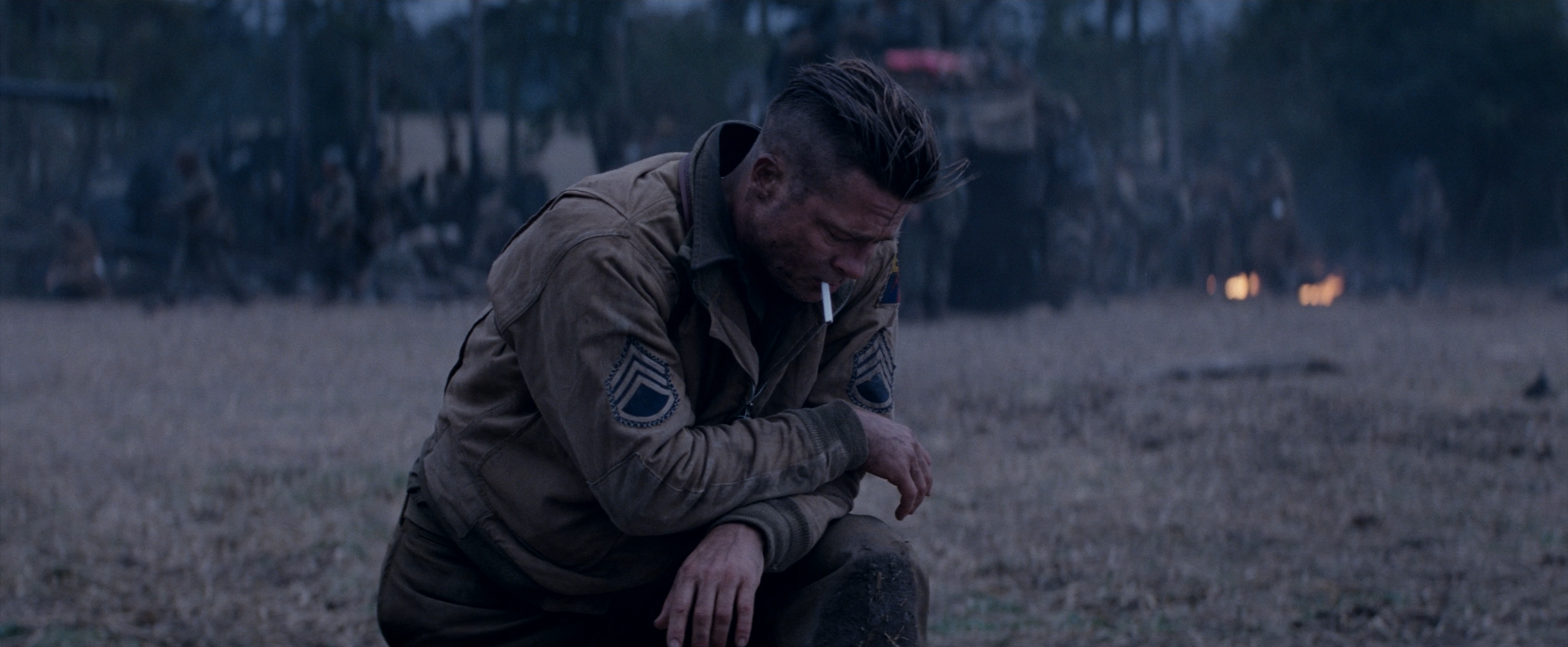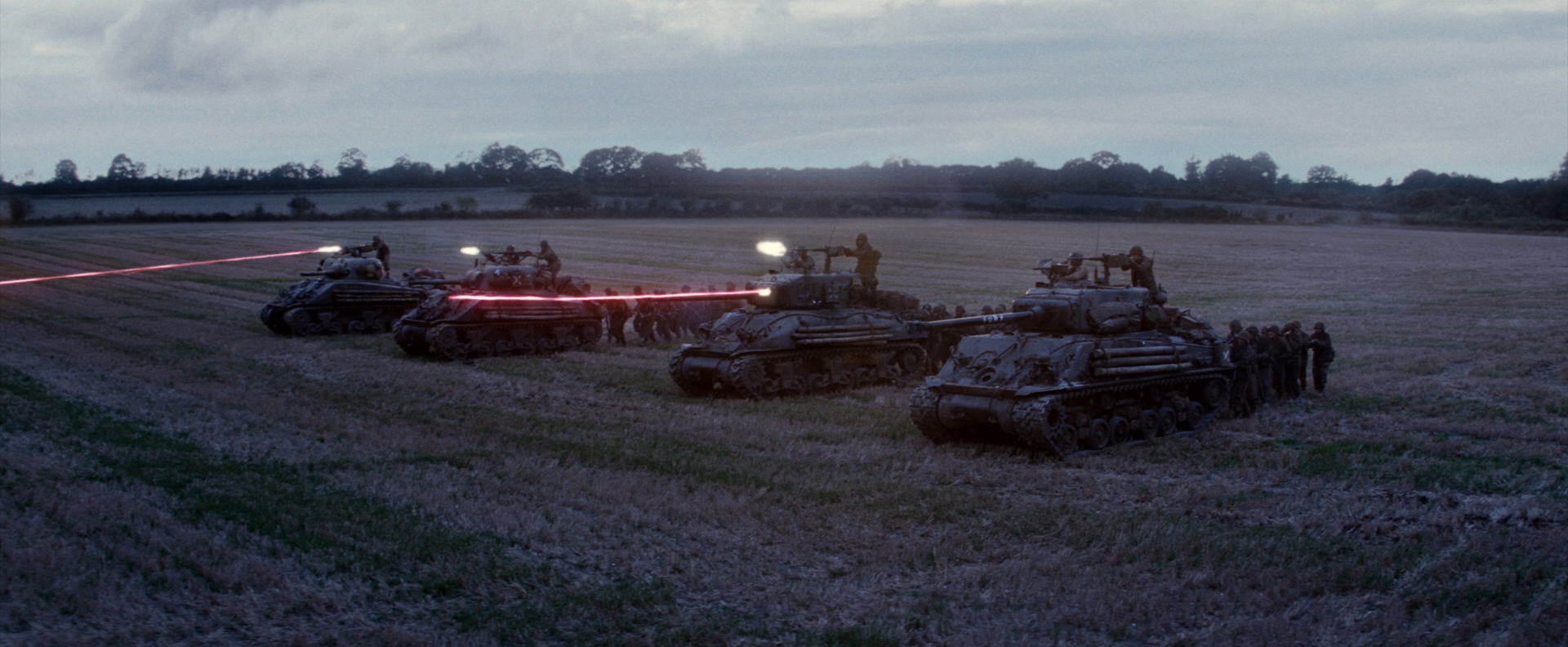

“I started this war killing Germans in Africa. Then France. Then Belgium. Now I’m killing Germans in Germany. It will end, soon. But before it does, a lot more people gotta die.”
Have a makeup artist carefully etch scars onto Brad Pitt’s face, ask him to talk with a funky drawl, have his ridiculously named WWII commander character lead his squadron into risky situations with the primary goal of racking up the Nazi killcount. If you guessed Inglourious Basterds, congratulations, you get to watch Quentin Tarantino’s audacious revisionist war film. If you guessed David Ayer’s Fury, which came out five years later, you’re in for a straightforward lesson in bloodletting, on-the-nose dialogue, and writing that undercuts its central message. Excessive, realistic gore only interests me if its in service of something, but in Fury it is raised as the centerpiece. There’s meaty parts flying all over the screen but the narrative has no meat on its bones at all. And so if you don’t click with the one-dimensionally sketched squadron of tank operators, there’s little dramatic heft to match the exquisitely realized showers of blood, organs, and bone, and this makes for a long slog through the carnage.
In the final days of WWII, Allied forces marched across the ravaged German countryside, accepting surrender from Nazi troops but wary of trickery. Some Germans rolled over, but others dug in their heels and desperately fought for their country. German children fought and died. Deserters were hung as a warning to those who thought of following suit. Into this unstable situation rolls Fury, a Sherman M4 tank commanded by Don “Wardaddy” Collier (Pitt). His squad, which has been together since they first fought in North Africa, includes tank gunner Boyd “Bible” Swan (Shia LaBeouf), a devout Christian; gun loader Grady “Coon-Ass” Travis (Jon Bernthal), a degenerate mechanic; and driver Trini “Gordo” Garcia (Michael Peña). The film opens with the bow gunner missing most of his face, and for the next mission he is replaced by newcomer Norman “Machine” Ellison (Logan Lerman), a former typist who has only been in the Army for a few weeks and never even shot a gun when he’s sent to the frontlines and asked to join this tight-knit group.

Things do not go well for Norman. He doesn’t stand a chance of replacing their fallen comrade, and doesn’t gain any traction with his fellow crew members when he throws up in the tank during the process of cleaning his predecessors remains out of its innards. During his first exposure to action, he freezes up like a deer in headlights, disobeying instructions from Wardaddy at the cost of the life of another tank’s commander in grisly fashion. After an intense initiation ritual in which Wardaddy clamps down on the boy’s hands and essentially forces him to shoot a captured, defenseless German soldier, he comes around and begins to enjoy slaying Nazis; he even echoes his fellow tankmens’ adage that killing Nazis is the “best job he’s ever had.” This earns him a trip with Wardaddy to lose his virginity to a scared German girl. On their next mission, Fury breaks down. Before Coon-Ass can get it up and running again, the chanting voices and thundering stomps of 300 S.S. troops force the squad into a final stand in their metal coffin.
Visually, the film boasts a fine verisimilitude. Ayer used vintage tanks, shot on location, and put the cast through weeks of grueling military training. His commitment to realism and research (the tracer rounds are a nice touch) evokes the time and place with a good degree of clarity, and despite the famous faces, there’s no trouble considering these guys as soldiers. The storyline focuses on the bond formed between these five men, who would likely not have spared a moment for one another outside of the war. But in the refining crucible of combat they’ve become a tight-knit unit. The problem is that even though the camaraderie and the realism and all that are on point, the story is just a small mound of clichés that borrows more from Hollywood war films of yesteryear than actual history; with a few tender moments interspersed to slightly temper the macho man act. If it was the plot of a gaudy B movie I’d have no problem having some fun for an hour and a half, but this 134 minute whopper is begging to be taken seriously.

Pitt puts in a good performance as Wardaddy, even if he can’t seem to develop his character beyond a less playful portrayal of Lieutenant Aldo Raine. The others are all good, too, but the characters are all so one-dimensional, basically a single character trait with limbs and a mouth, that I couldn’t bring myself to really care about them. I enjoyed their performances but you can only expect so much from a stereotype. Besides Wardaddy, Norman is the only other character that’s given a chance of depth, all of which is on display briefly when the pair visit the German lady (Anamaria Marinca) and her cousin (Alicia von Rittberg) and Norman experiences a new sensation. Despite these infrequent moments that color a bleak portrait of war as living hell, Fury spends the bulk of its runtime glorifying the slaughter of human beings, which makes for an unbalanced presentation.
With Ayer’s evident obsession with blood and guts, it’s hard to take any subliminal hints at an anti-war message very seriously. He tries to claim disgust at the horrors of war while delighting in the gore and death that give rise to those horrors. Limbs are displaced, noggins explode, decomposed bodies are driven over without batting an eye. If you’ve seen Saving Private Ryan, you’ve seen the aesthetic, but Ayer seems to get some perverse satisfaction with it that does not seem healthy. Ultimately, this expensive production is missing a strong story. Ayer’s 35mm film looks great, and his violent content feels visceral and realistic, but it’s too unimaginative to be anything more than a stomach-churning series of firefights.